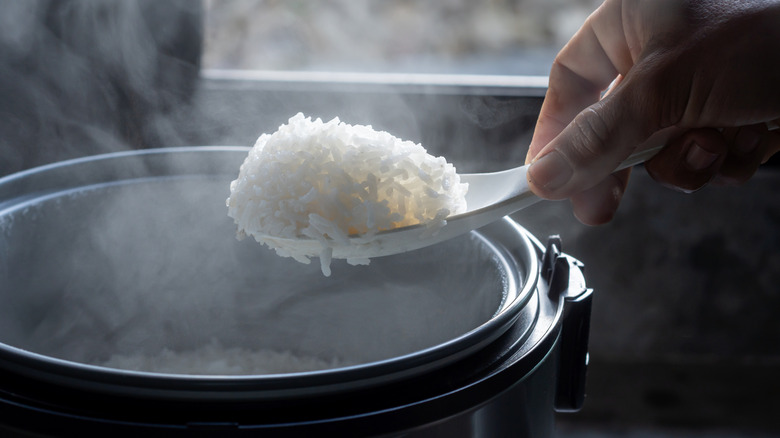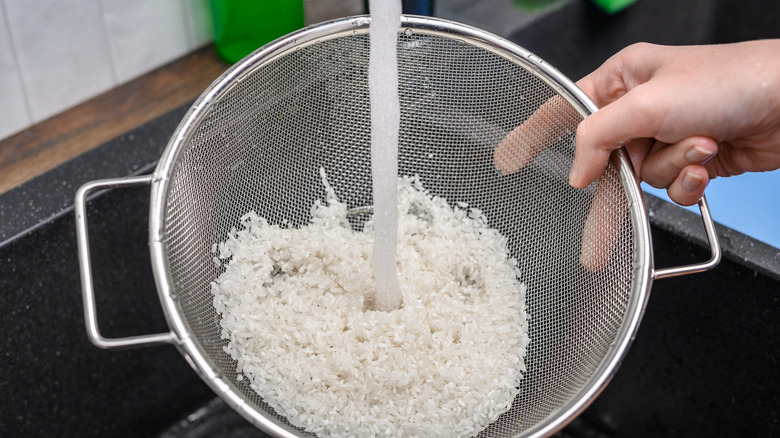Why Doesn't The 1-2-3 Rice Rule Work Every Time?
Rice is one of the simplest staples out there, at least in theory. Actually making it — and making it well — isn't as easy as it looks. Not even my supposedly foolproof Instant Pot makes perfect rice every time. Because of this, it's tempting to resort to easy-to-remember hacks. For example, you might've heard of the knuckle method, where you place a finger on top of the rice and add water until it reaches your knuckle. Then there's the 1-2-3 method: combine one part uncooked rice with two parts water for three parts cooked rice. Unfortunately, this one-size-fits-all solution isn't as helpful as you might think.
Marissa Stevens, the writer and recipe developer behind Pinch and Swirl, set the record straight. She isn't too keen on the 1-2-3 method. "It's fine as a ballpark for some kinds of rice, but I don't use it for sushi rice," Stevens told The Takeout. "Short-grain rice needs a little less water — too much and it turns out gummy instead of that perfect, lightly-sticky texture. I use 1½ cups rice to 1⅔ cups water, and that's been spot on." Stevens stressed the importance of adjusting the water-to-rice ratio to the type of rice you're using. "Every variety absorbs water differently," she said. "What works for long-grain doesn't work for short-grain, and the same rule won't hold up with brown or wild rice either."
Top tip for cooking rice
The type of rice isn't the only thing that can impact your liquid-to-grain ratio. The type of liquid you're using can have an impact, too. "If you're swapping in broth or something richer, you may need to tweak the amount. Thicker liquids behave differently during cooking and can throw off the texture," Stevens said. It might take trial and error to figure out the right ratio for the liquid you're using, but it's better to overdo it on the liquid than end up with undercooked rice. You can always strain off the extra liquid if you end up with soupy rice.
We've talked about the importance of rinsing rice before, but it bears repeating. Stevens is a hard-core rice-rinser. "Rinse it well," she recommended. "It's the one step I never skip or rush. I rinse until the water runs mostly clear, then soak the rice for about 15 minutes before cooking." For an extra boost of flavor, toast the rice after you've rinsed it.
Cook the rice according to the package directions. But Stevens takes one final step after the timer dings. "After cooking, let it rest for 10 minutes with the lid on and a clean towel over the top to catch condensation — it finishes steaming and gives you fluffier results."

